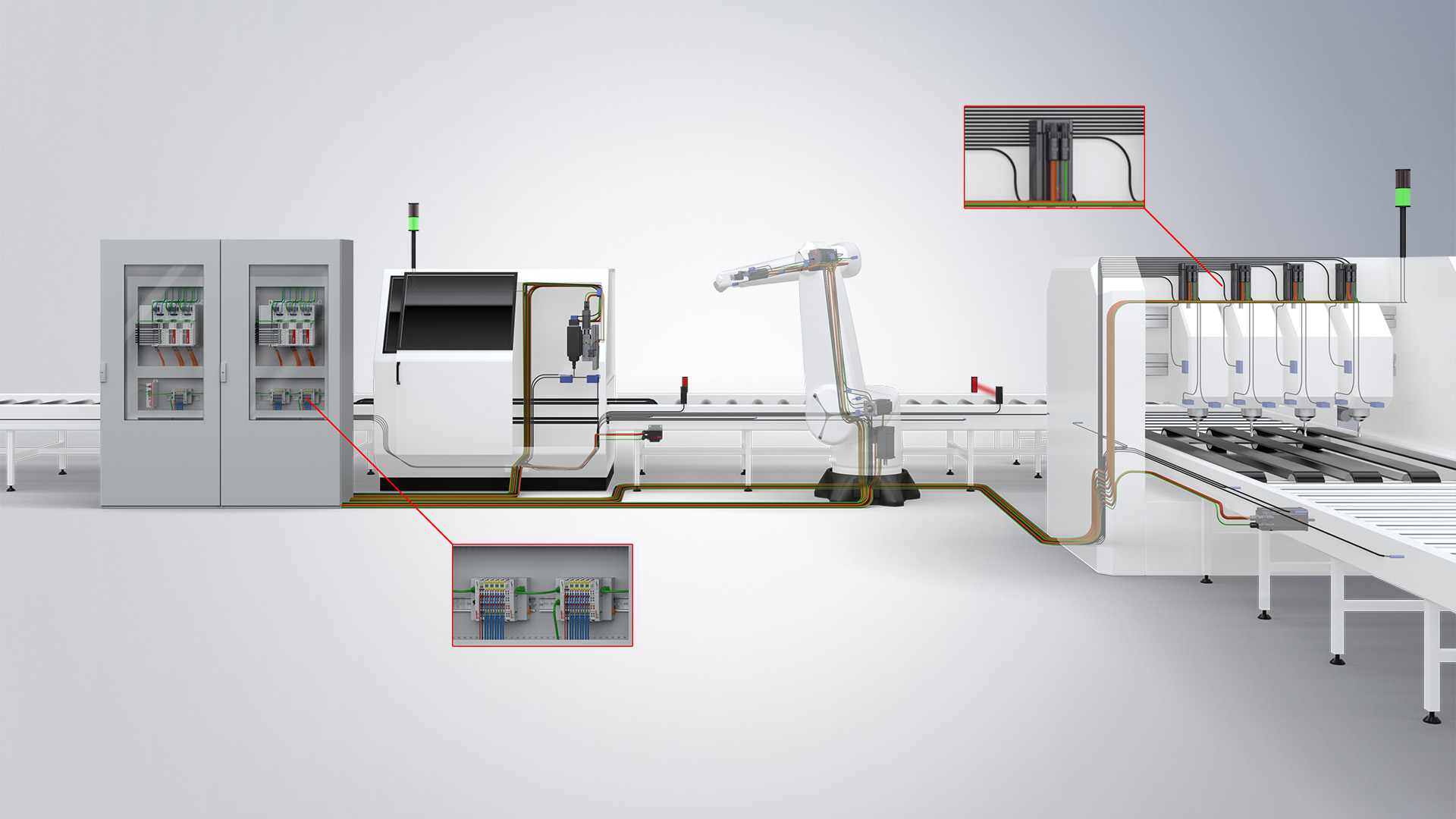

One Cable Automation (OCA): The cabling philosophy for decentralized automation technology
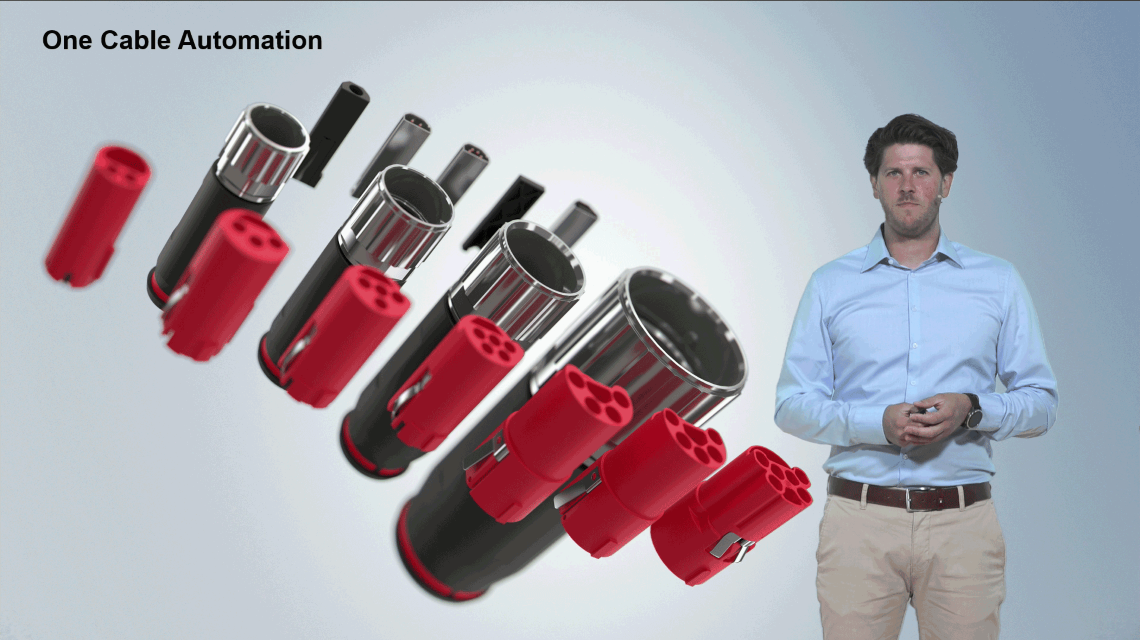
One Cable Automation aims to provide efficient and optimal cabling for devices, machines, and systems, along with their associated peripherals. This is accomplished through the basic principle of combining power, signal, and data communication in a single connector. Cutting down on cable routes not only significantly reduces the complexity of the entire cabling process, but also saves space, time, and costs.
OCA is a comprehensive cabling philosophy that comprises specific technology for single-cable solutions. Its benefits can be observed at virtually every level and across all devices. Whether with EtherCAT P, the ultra-fast one cable solution for control cabinet-free automation, OCT for motion applications, or CP-Link 4 for remote operating units, OCA offers innovative cabling solutions for the entire field level.
Central machine cabling
In machine systems with conventional cabling, lines from the sensors and actuators are routed centrally to a main control cabinet. Large cable cross-sections are usually used to compensate for voltage losses due to long distances between the central control cabinet and the sensors and actuators. This results in large bundles of cables both in and in front of the control cabinet, which means a lot of work during commissioning and an increased likelihood of errors.
Control cabinet-free machine cabling thanks to OCA technology
Cabling work is demanding in systems with a central control cabinet, and this can be significantly mitigated by using OCA technology and hybrid cables. The control cabinet is completely eliminated by relocating decentralized connection points directly into the individual devices of the system. This future-proof technology is ideal for ensuring space-saving, well-organized, and maintenance-friendly distribution of data and power cables, as well as for connecting sensors and actuators.
Learn more about OCA
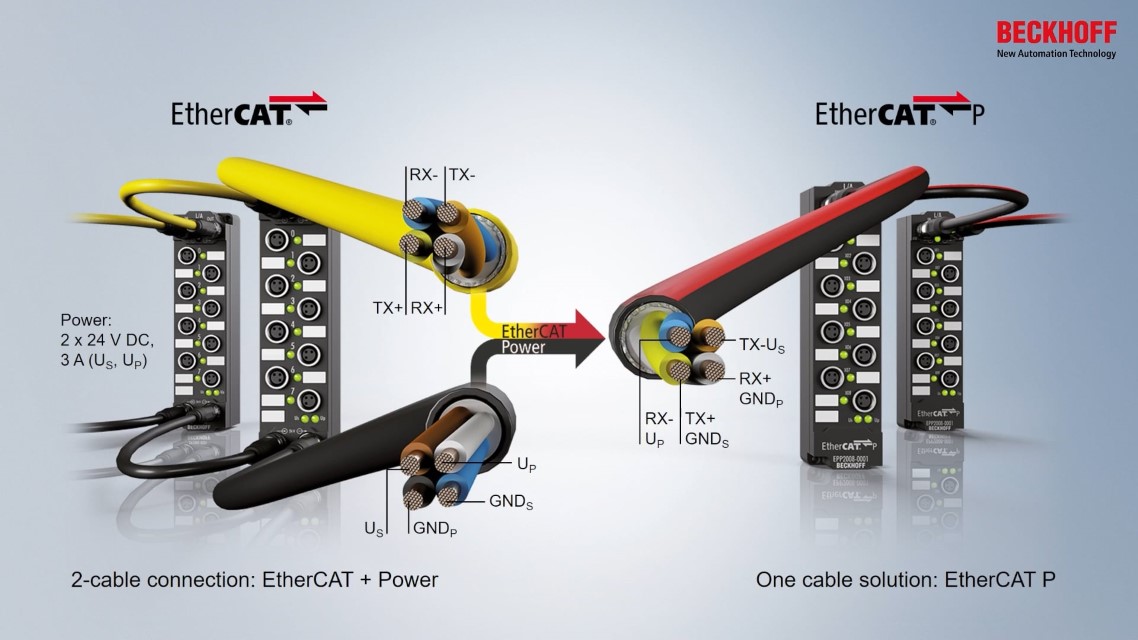
#1: What is a hybrid connector?
A hybrid connector combines power, signal, and data communication in a single housing and offers an integrated connection concept for EtherCAT/Ethernet and EtherCAT P technology, with connectors/flanges available in the standard sizes of B12, B17, B23, and B40.

#2: What is OCA?
OCA is a comprehensive cabling philosophy that comprises specific technology for single-cable solutions. Its benefits can be observed at virtually every level and across all devices, whether with EtherCAT P, the ultra-fast one cable solution for control cabinet-free automation, OCT for motion applications, or CP-Link 4 for remote operating units.
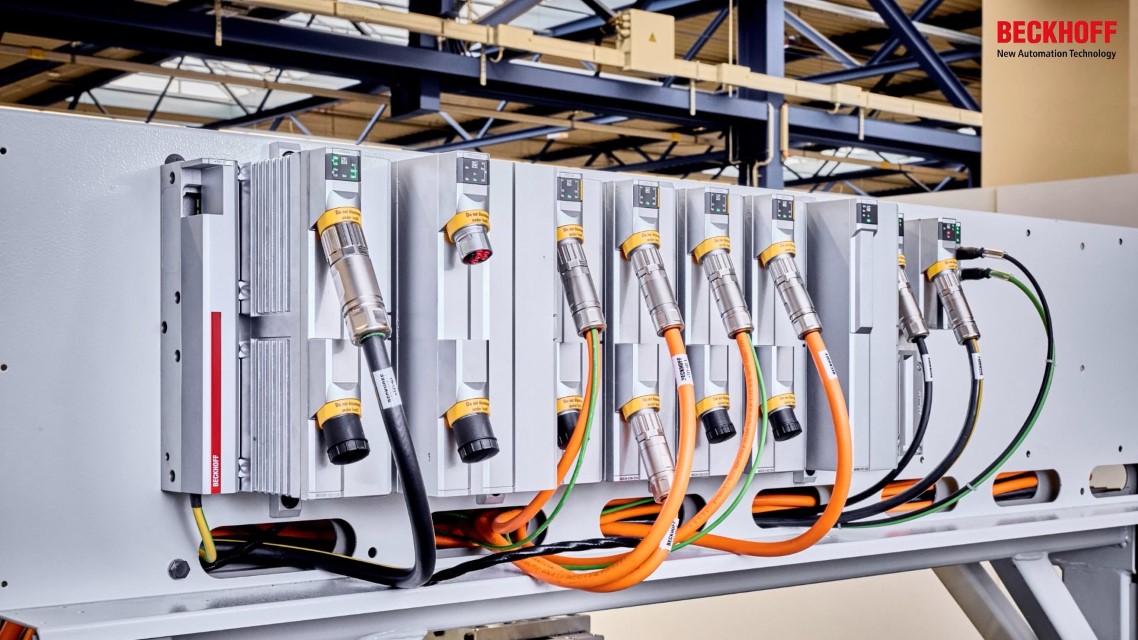
#3: What are the advantages of hybrid connectors?
In addition to the streamlined cabling process, greater space savings, improved organization, and lower costs, the modular design stands out as one of the primary advantages. This allows a variety of decentralized automation devices to be networked with the same connector.

#4: What components does the OCA portfolio include?
The portfolio includes a wide range of pre-assembled cables in various designs. It also features components for field assembly, such as connectors and raw cables. The product range is rounded off by tools for easy installation, special protective caps, color-coded rings, and feed-through solutions for retrofit installation in the control cabinet.

#5: Simple connector assembly
The hybrid connector series is available with two to seven power contacts from 24 V DC at the I/O level up to drives with 400 V AC or 630 V AC / 850 V DC and up to 72 A. It offers an integrated connection concept for EtherCAT/Ethernet and EtherCAT P technology, with connectors/flanges available in various sizes. The poka-yoke principle ensures that the plug connector can only be assembled in the correct configuration, while the bayonet fitting ensures fast cabling and installation.
A comparison: Conventional wiring and One Cable Automation
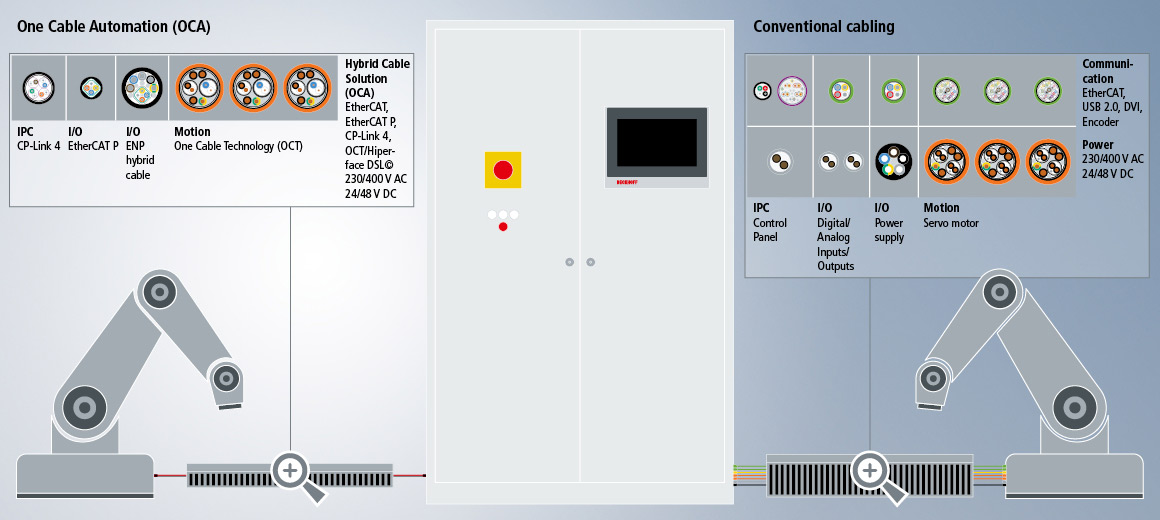
| One Cable Automation (OCA) | Conventional cabling | |
|---|---|---|
| Simplified cabling | Separate systems | |
| Space savings | Flexible choice of components | |
| Cost reduction | Redundancy | |
| Increased reliability | Broad compatibility | |
| Simplified servicing and maintenance | Special applications | |
| Future security |
All the advantages of One Cable Automation at a glance

- reduced complexity in the cabling process
- simplified commissioning
- space-saving, straightforward, and smaller footprint
- lower material and labor costs
- high level of modularity for system adaptations or extensions
- improved operational uptime as cabling is less prone to faults
- faster maintenance
- more energy-efficient systems and machines
Connectors in accordance with IEC standard 61076-2-118
Beckhoff hybrid connectors are among the first products to comply with the future IEC 61076-2-118 standard. The primary aim of establishing a global standard like this is to ensure security for the user, not only with regard to supply chains and second-source strategies, but also in terms of the level of product reliability defined by established and widely adopted standards.
OCA – The one cable solution for all automation sectors

EtherCAT P
The one cable solution – One step closer to automation without control cabinets.

CP-Link 4
The continuous development of the industrial control panel connection technology allows the control panel to be located away from the PC.
